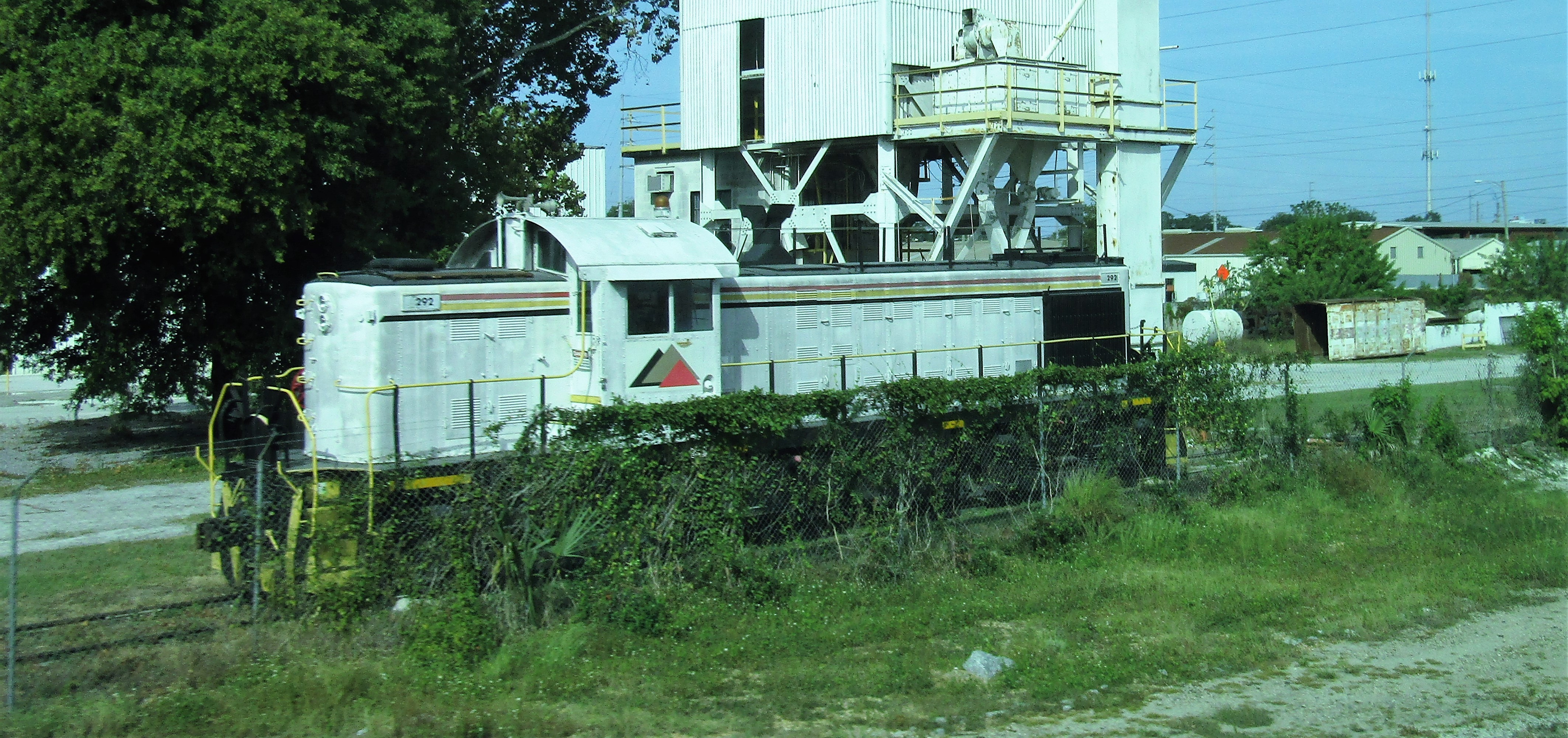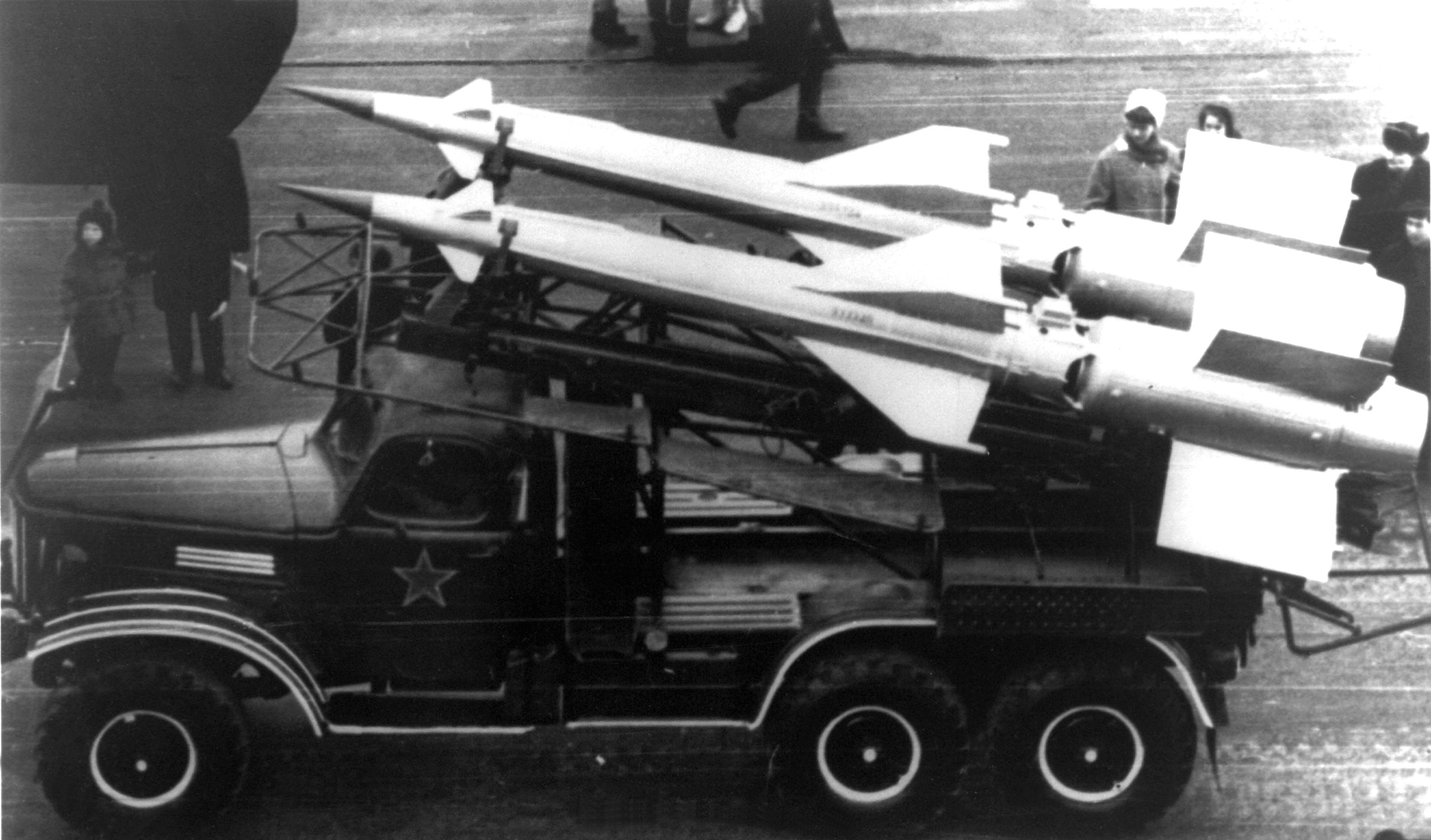|
TEM1
TEM1 () was a Soviet diesel-electric locomotive, produced between 1958 and 1968 at the Bryansk Machinery Plant (BMZ). History The locomotive can be seen as a descendant of the DA units imported under Lend-Lease during World War II; TEM1 units were produced between 1958 and 1968 as the evolution of the DA units (which were American Alco RS-1 designs). Nearly 2000 TEM1 units were built in as a "serious attempt at ending steam shunting" The units had an improved 2D50 turbocharged diesel engine, derived from the TE3 locomotive. The layout of the locomotive underwent some changes: the body had the same overall layout, but the driver's cabin was slightly lowered and was placed closer to the rear of the locomotive. Also, and the diesel engine was moved closer to the driver's cabin and was located exactly in the center of the locomotive. The units received the designation TEM1 (T – diesel engine, E – with electric transmission, M – maneuvering). They were the first Soviet diese ... [...More Info...] [...Related Items...] OR: [Wikipedia] [Google] [Baidu] |
TEM2
TEM2 () is a Soviet diesel-electric shunting locomotive. The locomotive was used throughout the Soviet Union and was exported to Poland and Cuba. History The locomotive can be seen as a descendant of the DA units imported under Lend-Lease during World War II; TEM1 units were produced between 1958 and 1968 as the evolution of the DA units (which were American ALCO RSD-1 designs). 2000 TEM1 units were built as part of a "serious attempt at ending steam shunting". TEM2 is an upgraded version of the TEM1, with 883 kW of power and the same tractive effort as the TEM1, but with an increased speed and a reduced weight. The first prototypes appeared at the Bryansk factory in 1960, with several pilot batches of locomotives built before full production began in 1967. TEM2 was built in both Bryansk and Lugansk until 1987. TEM2 has several subtypes, indicated by suffixes: M (modernized braking), U (improved braking) and T (electric dynamic braking). Usage The units are widely associa ... [...More Info...] [...Related Items...] OR: [Wikipedia] [Google] [Baidu] |
ALCO RSD-1
The ALCO RSD-1 is a diesel-electric locomotive built by the American Locomotive Company (ALCO). This model was a road switcher type rated at and rode on three-axle trucks, having a C-C wheel arrangement. It was often used in much the same manner as its four-axle counterpart, the ALCO RS-1, though the six-motor design allowed better tractive effort at lower speeds, as well as a lower weight-per-axle. It was developed to meet the need to supply the Soviet Union over the Trans-Iranian Railway starting in mid 1943. On the other hand, due to the traction generator and appurtenant control apparatus being sized for four axles and yet having two additional powered axles, it had poorer performance at higher speeds.Rakov (1995), p. 371-374. Variations There were three different specifications issued that covered the RSD-1 model; E1645 and E1646 were for wartime production for the US Army, while E1647 was a post-war order for the Mexican National Railways ( Ferrocarriles Nacionales de ... [...More Info...] [...Related Items...] OR: [Wikipedia] [Google] [Baidu] |
Bryansk Machine-Building Plant
Bryansk Machine-Building Plant () is a company based in Bryansk, Russia and established in 1873. It is part of Transmashholding CJSC Transmashholding () is the largest manufacturer of locomotives and rail equipment in Russia and after merging with LocoTech service the fourth largest engineering company in the field of transport technology globally. The company incl .... The Bryansk Machine-Building Plant is the oldest builder of transportation equipment in Russia. It produces diesel locomotives, marine diesel engines (diesel B&W licensed), and specialized railroad equipment such as five-car refrigerator trains. References External links Official website Rail vehicle manufacturers of Russia Diesel engine manufacturers Marine engine manufacturers Companies based in Bryansk Oblast Transmashholding Companies established in 1873 Ministry of Heavy and Transport Machine-Building (Soviet Union) Manufacturing companies of the Soviet Union Companies nationalised ... [...More Info...] [...Related Items...] OR: [Wikipedia] [Google] [Baidu] |
Lend-Lease
Lend-Lease, formally the Lend-Lease Act and introduced as An Act to Promote the Defense of the United States (),3,000 Hurricanes and >4,000 other aircraft) * 28 naval vessels: ** 1 Battleship. (HMS Royal Sovereign (05), HMS Royal Sovereign) ** 9 Destroyers. ** 4 Submarines. ** 5 Motor mine-sweepers. ** 9 Mine-sweeping trawlers. * 5,218 tanks (including 1,388 Valentines from Canada) * >5,000 anti-tank guns ** 1,000 PIAT, P.I.A.T's ** 636 2-pounder gun, 2-Pdr's ** 96 6-pounder gun, 6-Pdr's ** 3,200 Boys anti-tank rifle, Boys anti-tank rifles * 4,020 ambulances and trucks * 323 machinery trucks (mobile vehicle workshops equipped with generators and all the welding and power tools required to perform heavy servicing) * 1,212 Universal Carriers and Loyd Carriers (with another 1,348 from Canada) * 1,721 motorcycles * £1.15bn ($1.55bn) worth of aircraft engines * 1,474 radar sets * 4,338 radio sets * 600 naval radar and sonar sets * Hundreds of naval guns * 15 million pairs of ... [...More Info...] [...Related Items...] OR: [Wikipedia] [Google] [Baidu] |
World War II
World War II or the Second World War (1 September 1939 – 2 September 1945) was a World war, global conflict between two coalitions: the Allies of World War II, Allies and the Axis powers. World War II by country, Nearly all of the world's countries participated, with many nations mobilising all resources in pursuit of total war. Tanks in World War II, Tanks and Air warfare of World War II, aircraft played major roles, enabling the strategic bombing of cities and delivery of the Atomic bombings of Hiroshima and Nagasaki, first and only nuclear weapons ever used in war. World War II is the List of wars by death toll, deadliest conflict in history, causing World War II casualties, the death of 70 to 85 million people, more than half of whom were civilians. Millions died in genocides, including the Holocaust, and by massacres, starvation, and disease. After the Allied victory, Allied-occupied Germany, Germany, Allied-occupied Austria, Austria, Occupation of Japan, Japan, a ... [...More Info...] [...Related Items...] OR: [Wikipedia] [Google] [Baidu] |
Alco RS-1
The ALCO RS-1 is a 4-axle diesel-electric transmission, diesel-electric locomotive built by Alco-GE between 1941 and 1953 and the American Locomotive Company from 1953 to 1960. ALCO subsidiary Montreal Locomotive Works built an additional three RS-1s in 1954. This model has the distinction of having the longest production run of any diesel locomotive for the North American market. The RS-1 was in production for 19 years from the first unit Rock Island #748 in March 1941 to the last unit National of Mexico #5663 in March 1960. Design In 1940, the Rock Island Railroad approached ALCO about building a road switcher locomotive, for both road and switching service. To meet the Rock Island's request, ALCO created the RS-1. Their new design was a hood unit, in contrast to most existing locomotive designs at the time which were predominantly cab unit, carbody units. The hood unit design allowed for improved visibility, especially to the rear. Rear visibility is very important for Shunti ... [...More Info...] [...Related Items...] OR: [Wikipedia] [Google] [Baidu] |
Soviet Locomotive Class TE3
The ТE3 (Russian: ''ТЭ3''; ) is a Soviet diesel-electric locomotive, built in Russia and Ukraine to 1520 mm gauge. It is a two-unit Co’Co’+Co’Co’ machine. Total diesel power is . They were built from 1953 to 1973. Powertrain The TE3 is powered by two Kharkiv 2D100 prime movers. Power output of each engine is . Transmission is diesel electric Diesel may refer to: * Diesel engine, an internal combustion engine where ignition is caused by compression * Diesel fuel, a liquid fuel used in diesel engines * Diesel locomotive, a railway locomotive in which the prime mover is a diesel engine .... Numbering Each pair of locomotives was numbered: 001–598, 1001–1404, 2001–7805, making a total of 6807 pairs or 13,614 units. The information box shows 6808 pairs and 13,617 units. The reason for the discrepancy is not known. Possibly 3 spare units were built to cover for failures. Popular culture References Co-Co+Co-Co locomotives Railway locomotives introduced in ... [...More Info...] [...Related Items...] OR: [Wikipedia] [Google] [Baidu] |
SA-3 Coupling
The S-125 ''Neva/Pechora'' (, NATO reporting name SA-3 ''Goa'') is a Soviet surface-to-air missile system that was designed by Aleksei Isaev to complement the S-25 and S-75. It has a shorter effective range and lower engagement altitude than either of its predecessors and also flies slower, but due to its two-stage design it is more effective against more maneuverable targets. It is also able to engage lower flying targets than the previous systems, and being more modern it is much more resistant to ECM than the S-75. The 5V24 (V-600) missiles reach around Mach 3 to 3.5 in flight, both stages powered by solid fuel rocket motors. The S-125, like the S-75, uses radio command guidance. The naval version of this system has the NATO reporting name SA-N-1 Goa and original designation M-1 Volna (Russian Волна – ''wave''). Operational history Soviet Union The S-125 was first deployed between 1961 and 1964 around Moscow, augmenting the S-25 and S-75 sites already ringing the ... [...More Info...] [...Related Items...] OR: [Wikipedia] [Google] [Baidu] |
Railway Locomotives Introduced In 1958
Rail transport (also known as train transport) is a means of transport using wheeled vehicles running in tracks, which usually consist of two parallel steel rails. Rail transport is one of the two primary means of land transport, next to road transport. It is used for about 8% of passenger and freight transport globally, thanks to its energy efficiency and potentially high speed.Rolling stock on rails generally encounters lower frictional resistance than rubber-tyred road vehicles, allowing rail cars to be coupled into longer trains. Power is usually provided by diesel or electric locomotives. While railway transport is capital-intensive and less flexible than road transport, it can carry heavy loads of passengers and cargo with greater energy efficiency and safety. Precursors of railways driven by human or animal power have existed since antiquity, but modern rail transport began with the invention of the steam locomotive in the United Kingdom at the beginning of the 19th ... [...More Info...] [...Related Items...] OR: [Wikipedia] [Google] [Baidu] |






